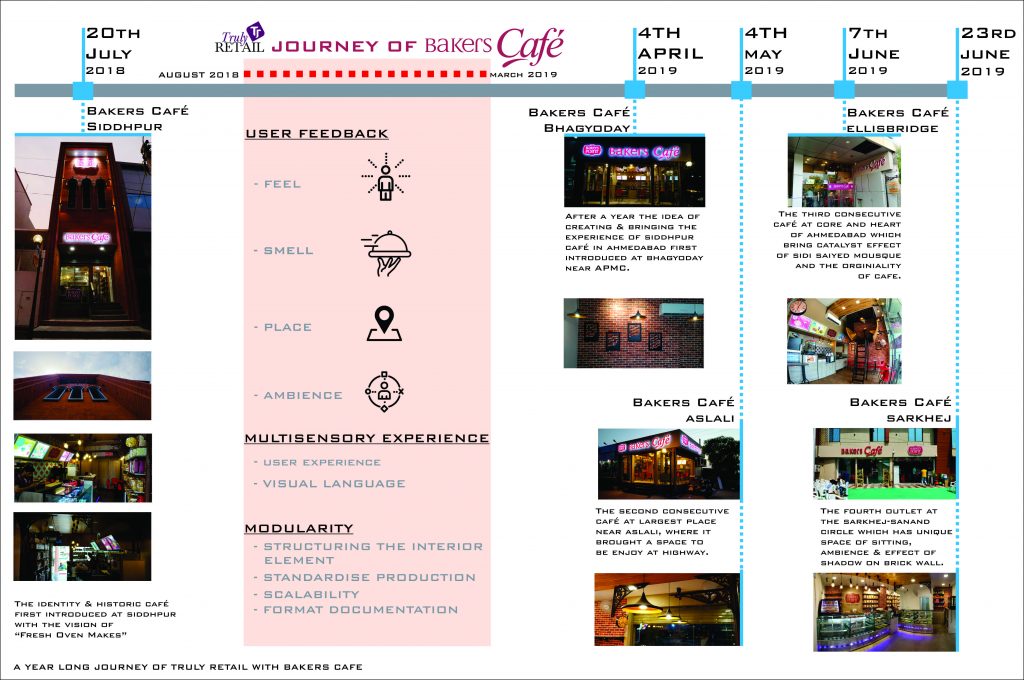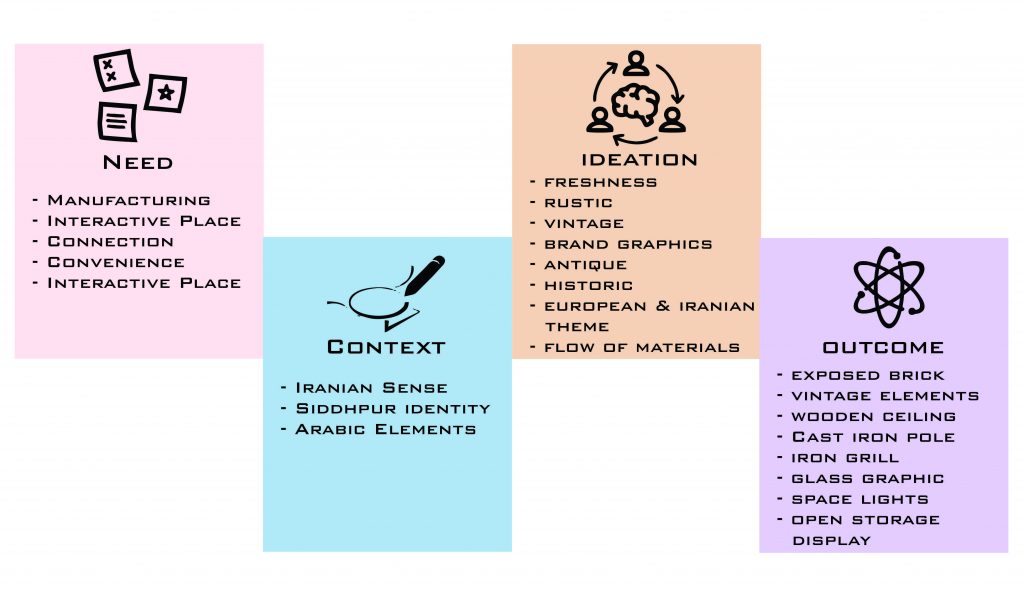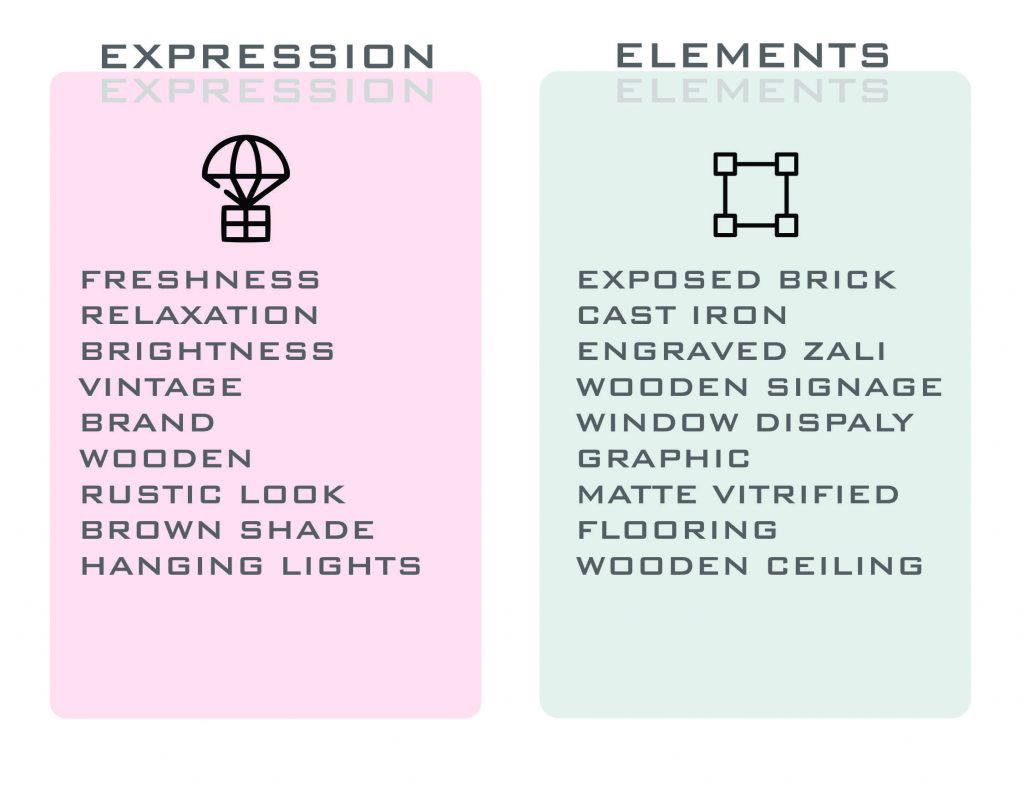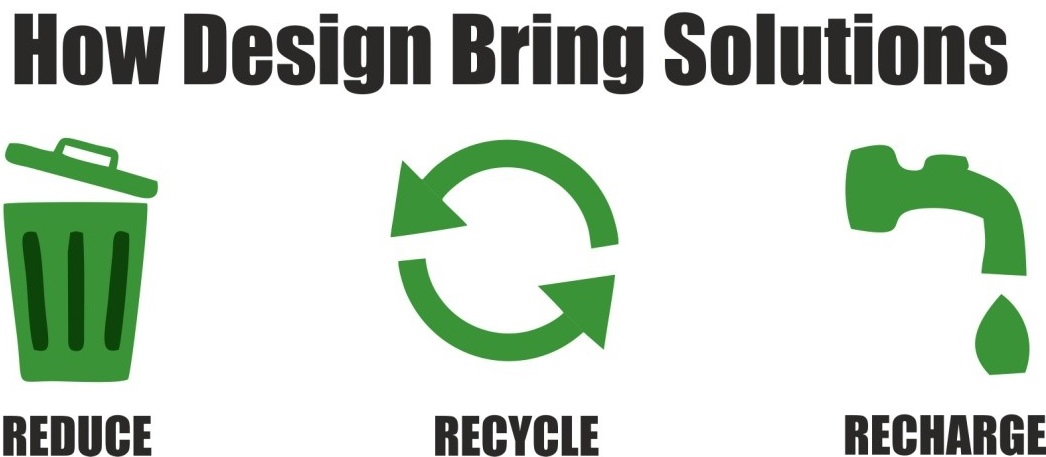Every journey has its own genre in which there is combination of its culture and innovations. Here there is also a Journey of Bakers Café initiated with the vision of bringing catalyst effect with the effort of teamwork worth documenting & bringing in life.
It started from the miniature town of siddpur of patan district. The town in itself is an historical place famous for its beautiful/magnificent havelis or bohras medieval homes. The wooden architecture of the bohra house, the art & galis/street gave a life to siddpur. With that note, a new concept was developed and communicated by the orginiator of our visionary man, the mentor of Hearty mart.
The important part was to create an upmark ideas which speaks about the vision and aspirations of the café. A small brief carried was to establish the manufacturing set up & small café. The USP of providing “FRESH PRODUCT” to the town where it all started & BAKERS CAFÉ got an identity and value of “FRESH OVEN MAKES”
With the brief, we designers started with the process of designing the set up & café with the following elements.
Branding
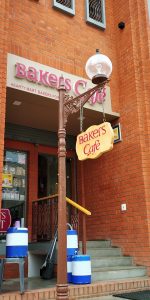 The first element is the identity of bakers café, created through the cast iron pole which gives a look of vintage. It also have wooden bakers café signage hunged with the pole.
The first element is the identity of bakers café, created through the cast iron pole which gives a look of vintage. It also have wooden bakers café signage hunged with the pole.
Building Elevation
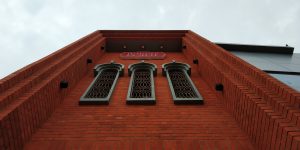
The building elevation is of exposed brick wall which brings the identity of siddhpur street. Its elevation is created with the effect of brick wall shadow effect.
Retail Interior Space
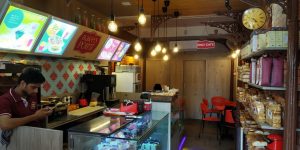 The vintage orange light creates an aura of café with the combination of the bakers café element.
The vintage orange light creates an aura of café with the combination of the bakers café element.
Experience Seating
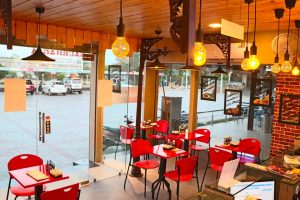 Sitting arrangement is always the space where interaction is there. To have an aura of light and perfect wall it gives space to enjoy the café food.
Sitting arrangement is always the space where interaction is there. To have an aura of light and perfect wall it gives space to enjoy the café food.

